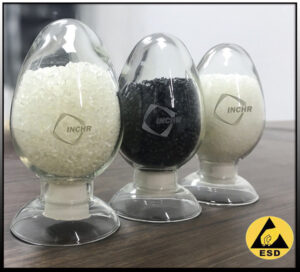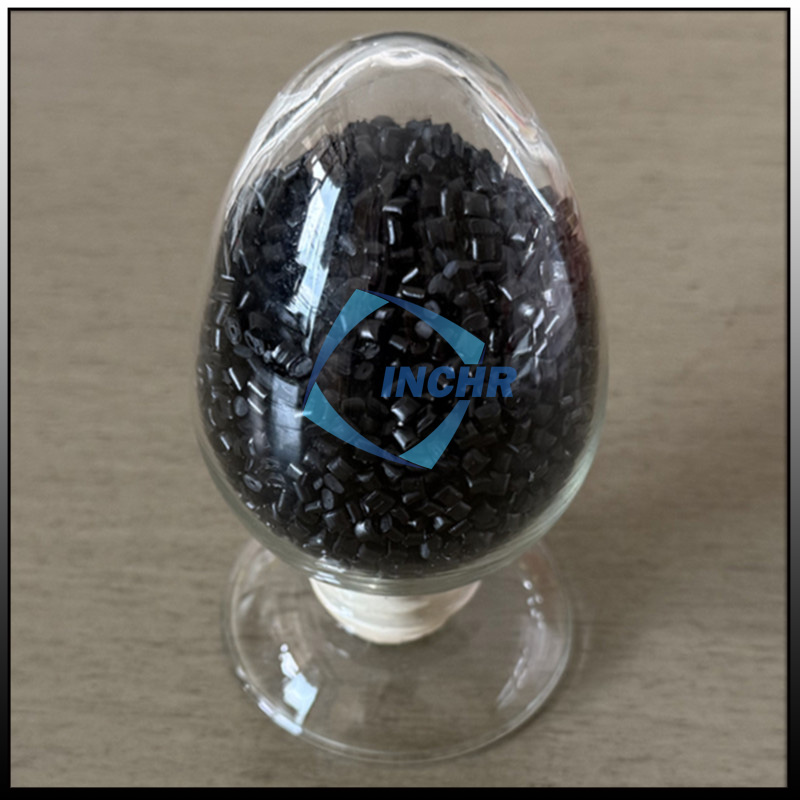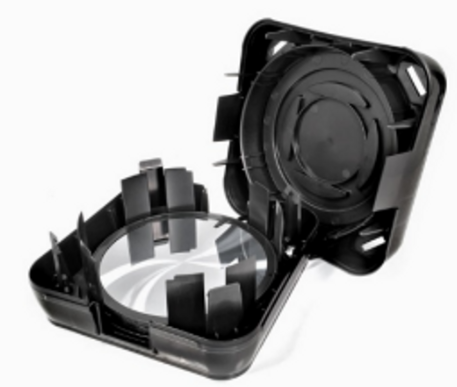Introduction of INCHR@ESD plastics | Product Catalog
INCHR@ESD plastics are plastic materials with antistatic properties. It is usually made by adding antistatic agents, ESD masterbatch, or intrinsically conductive polymers in matrices. These plastics can reduce the impact of static electricity on the product and the surrounding environment, such as avoiding dust adsorption due to static electricity, preventing static electricity from causing damage or interference to precision electronic components and reducing the possibility of danger caused by sparks caused by static electricity.
INCHR@ESD plastics include: ESD compound for polymers like PE, PP, PS, ABS, Nylon, PC, EVA, PVC, TPEE, TPU, PET, POM, PEEK; Permanent antistatic agent for LLDPE, PP, ABS, POM and rubber; ESD masterbatch for MABS, PET, HIPS, Nylon; Conductive masterbatch for HIPS, PE, PP. All in granular form.

Permanent antistatic agent in ESD plastics
One way to achieve antistatic properties is to add permanent antistatic agents. The permanent antistatic agent is a type of antistatic additive with a polymer structure; it usually consists of hydrophilic polymer segments that have compatibility with the plastic matrix. The mechanism of action of polymer antistatic agents is mainly to dissipate accumulated electrostatic charges by forming a continuous conductive network or hygroscopic conductive layer in the resin. Compared with small molecule antistatic agents, permanent antistatic agents have the following advantages: better long-lasting effectiveness, non-migrating, non-exudate, volatilize; antistatic properties are relatively more stable; and have less impact on the physical properties of plastic products. Common permanent antistatic agents are polyether ESD polymers. They play an important role in the field of plastic processing, helping to improve the antistatic properties of ESD plastics and ensuring product quality and safety.
ESD masterbatch in ESD plastics
Adding masterbatch is another way to achieve anti-static properties. Antistatic and conductive masterbatchs are used in various polymer materials. For example, HIPS antistatic masterbatch is used to make ESD HIPS trays; they use masterbatch to make anti-static LLDPE packaging bags. Common conductive masterbatchs include conductive carbon black, carbon fiber, carbon nanotube masterbatch, and metal fiber conductive masterbatch. Metal fillers mainly conduct electricity through electron conduction, while carbon fillers conduct electricity by forming a conductive network inside the material. Generally, the strength of the anti-static performance is controlled by adding different proportions. Most conductive fillers are black or dark in color.
Application of ESD plastics
- In the electronics industry, ESD plastics can be used to manufacture casings and internal structural parts of electronic products such as computers and mobile phones to prevent static electricity from interfering with the normal operation of equipment; in semiconductor manufacturing, it can be used in wafer boxes, transmission trays, etc. to prevent static electricity from causing damage to chips, etc. damage.
- In the automobile manufacturing industry, it can be used in interior decoration parts, instrument panels, etc. to reduce the generation of static electricity and improve driving comfort and safety.
- In the field of warehousing and logistics, it is used to make anti-static pallets, shelves, etc. to reduce the risk of fire caused by static electricity.
- In the medical device industry, such as surgical instruments, medical equipment casings, etc., ensure the safety of medical operations.
- In the aerospace field, ESD plastics are also used in some special parts to meet specific static control needs.
About INCHR
Dongguan City INCHR New Material Co., Ltd. (INCHR) is a leading supplier of antistatic plastics in China and an innovative enterprise integrating R&D, production, sales, and technical services. INCHR focuses on a full range of ESD plastics, ESD compounds, ESD antistatic agents, ESD antistatic masterbatches, and ESD transparent antistatic masterbatches. All ESD plastics are independent of humidity and can be used under harsh conditions. The antistatic effect exceeds the service life of the product, there is no exudate problem, it does not affect the coloring, and it complies with ROHS and REACH regulations. INCHR@ESD plastics are widely used, especially in the semiconductor packaging industry, and are recognized by end customers, such as Samsung and SK in South Korea, for various long-lasting antistatic films, long-lasting antistatic sheets, and plates.




